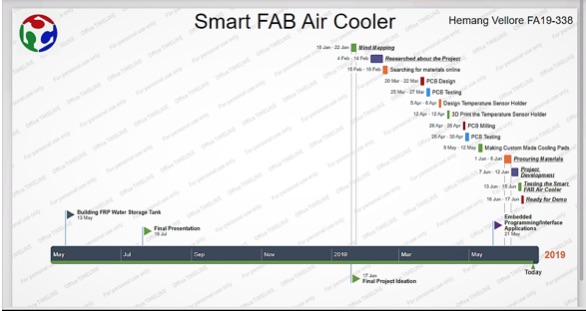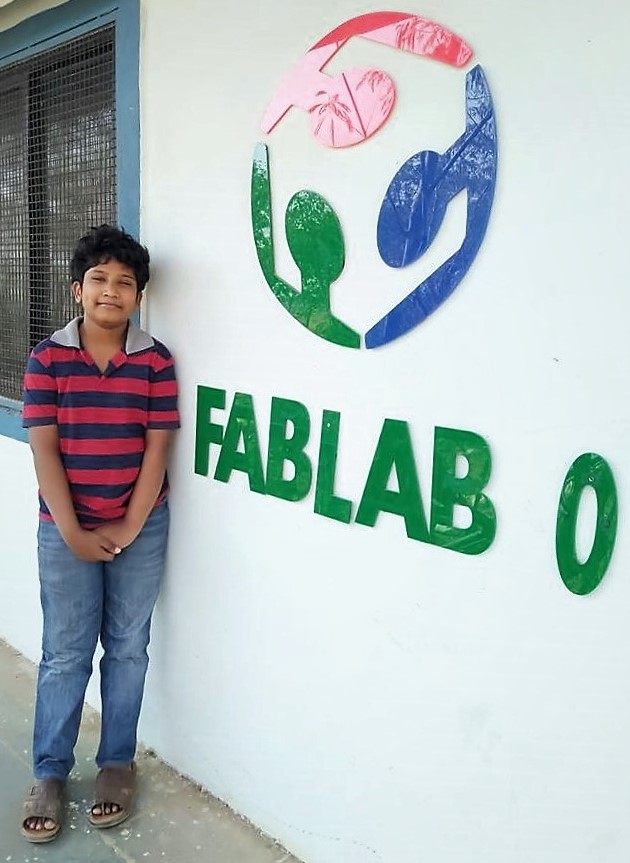In 2019 the International Labor Organization (ILO) estimated that by 2030 the global economy would suffer lost productivity worth USD 2.4 trillion annually due to heat stress, the equivalent of 80 million full-time jobs. With reference to the UNSDG 13 Climate Action, “The Cooling for All initiative” created to explore opportunities to incorporate methods to satisfy growing cooling demands for all sectors of society into the global clean energy transition. The initiative focuses on increasing efficiency for all aspects of cooling solutions, from cold supply chains for food and medicines to maintaining safe work and educational environments that increase productivity. In the aggregate, these are alarming figures. But they also belie the disproportionate impact on developing economies experiencing increasing heat stress, and the long-term impact heat stress will have on economic growth. It will be these countries, and the sectors that support their growth, that face the most significant productivity penalty due to a lack of access to sustainable cooling.
The analysis suggests that across 54 high-impact countries, the estimated annual economic loss due to heat stress is currently USD 630 billion, including USD 301 billion in the agricultural sector alone. This includes 318 million people living in poor rural areas and 699 million living in poor urban areas. A further 2.2 billion lower-middle income people pose a different kind of risk: limited purchasing choices mean they are likely to favor cooling devices that are typically inefficient and could cause a dramatic rise in energy demand and associated emissions. In Africa, the rural poor population continues to grow, to 204 million in 2020, whereas in Asia, the number of urban poor continues to grow, up to 484 million people in 2020.
The work of the initiative supports the objectives of the Paris Agreement on climate change, the Sustainable Development Goals, and the Montreal Protocol’s Kigali Amendment, which aims to limit hydro flouro carbon (HFC) production. HFCs are widely used in air conditioners and refrigerators as a substitute for ozone-harming cloro flouro carbons (CFCs), however they are also potent greenhouse gases.
Every country draws its energy needs from a variety of sources. We can broadly categorize these sources as commercial and noncommercial. The commercial sources include the fossil fuels (coal, oil and natural gas), hydroelectric power and nuclear power, while the non-commercial sources include wood, animal wastes, geothermal energy and agricultural wastes. The use of commercial energy has led to a better quality of life it has also created many problems. Perhaps the most serious of these is the harmful effect on the environment. The combustion of the fossil fuel has caused serious air pollution problems in many areas because of the localized release of large amounts of harmful gases into the atmosphere. It has also resulted in the phenomenon of global warming, which is now a matter of great concern. The gravity of these environmental problems embarks on the search for alternative sources of energy, it is clear that they would do well to keep the environment in mind.
UNSDG 13 Climate Action – The thirteenth goal in the SDGs sees governments pledging to: “Take urgent action to combat climate change and its impacts.” This is accompanied by five underlying targets. These are:
1. 13.1 Strengthen resilience and adaptive capacity to climate-related hazards and natural disasters in all countries.
2. 13.2 Integrate climate change measures into national policies, strategies and planning.
3. 13.3 Improve education, awareness-raising and human and institutional capacity on climate change mitigation, adaptation, impact reduction and early warning.
4. 13. A Implement the commitment undertaken by developed-country parties to the United Nations Framework Convention on Climate Change to a goal of mobilizing jointly $100 billion annually by 2020 from all sources to address the needs of developing countries in the context of meaningful mitigation actions and transparency on implementation and fully operationalize the Green Climate Fund through its capitalization as soon as possible.
5. 13. B Promote mechanisms for raising capacity for effective climate change-related planning and management in least developed countries and small island developing States, including focusing on women, youth and local and marginalized communities.
There is also a goal dedicated to “Energy”. This is a pledge to: “Ensure access to affordable, reliable, sustainable and modern energy for all.” This, too, comes with five associated goals. These are:
1. 7.1 By 2030, ensure universal access to affordable, reliable and modern energy services.
2. 7.2 By 2030, increase substantially the share of renewable energy in the global energy mix.
3. 7.3 By 2030, double the global rate of improvement in energy efficiency.
4. 7. A By 2030, enhance international cooperation to facilitate access to clean energy research and technology, including renewable energy, energy. Efficiency and advanced and cleaner fossil-fuel technology, and promote investment in energy infrastructure and clean energy technology.
5. 7.B By 2030, expand infrastructure and upgrade technology for supplying modern and sustainable energy services for all in developing countries, in particular least developed countries, small island developing States and landlocked developing countries, in accordance with their respective programs of support.
Non - Conventional Energy – As it’s estimated that the Fuel deposits in the will soon deplete by the end of 2045, fuel scarcity will be at the maximum. In a country like India in view of this alarming situation in mind I tried to make use of non-pollutant natural resource of solar energy. The creation of new source of perennial environmentally acceptable, low cost electrical energy as a replacement for energy from rapidly depleting resources of fossil fuels is the fundamental need for the survival of mankind. As per the reports, it’s forecasted that we have only about 25 years of oil reserves and 75 – 100 years of coal reserves. Resort to measure beginning of coal in thermal electric stations to serve the population would result in global elemental change in leading to worldwide drought and decertification. Solar power stations provide a cost-effective solution even though works on solar photo voltaic and solar thermos-electric energy sources have been extensively pursued by many countries.
Hence I chose this Solar FAB Air Cooler as My Final Project.
Ideate to Create –
Aim – I want to improve the awareness and improve the human capacity on mitigation, impact reduction and early warning in adaptation to the Climate Change. The sustainable and affordable cooling system does not mean that every home should have an air conditioner and a refrigerator. It means we should focus on affordable cooling technology and sustainable cooling solutions to address the needs of the most vulnerable population. So, this sustainable and transformative cooling for all eco idea highlights the climate friendly solution to provide protection from heat in the transition to affordable and clean energy. Here is my idea to show what can be done to make Sustainable Cooling a Reality.

I was checking out on my Ideation and counting on my deadline to finish the proposed project as you can see from the pictures shown above.
Working Methodology – Solar Energy Conversion and Cool Air generation by the Centrifugal Fan.
Makery -
1. My final project Solar Air Cooler Prototype laser cut in Cardboard step by step is shown below –


Video link -https://youtu.be/9VHpDiHPjeE
As you can see from the pictures above, I have designed the body of the proposed Solar Air Cooler in Auto Fusion 360. It worked in the first go. Please feel free to check out the design file and video in case you want to make one.
Task Completed – Yes – I’m extreemely happy with my
design as there was no error and the prototype was approved by my
mentor.
2. So, I went ahed and cut the finished cutting the Acrylic Sheets
for the body. The custom made Cooling pads are also ready.
3. Assembly of Solar FAB Air Cooler Body –

I got on to fix the acrylic body parts of the Solar Air Cooler laser cut after the cardboard prototype stood the test. I have used hot glue tubes to fix them all.
The 3D printed Temperature Holder was designed during the Computer Aided
Design Assignment as shown below and printed during the 3D Modelling,
Scanning and Printing assignment.

Design File - A3
Computer Aided Design_files\lm35 v2.f3dA3 Computer Aided
Design_files\lm35 v2.f3d
The FRP Water Storage Tank and my solar air cooler body parts’s design
is ready too.


My Fab Lab Instructor suggested that I do a Champer Design for the Water
Storage Tank and cut it on cardboard. I did so, but it was too fragile
that it dint withstand the press fit assembly and gave in.

Used Dremel to refine the corners of the FRP Water Storage Tank.
For the parts that are already made and sourced can be seen in the
Amplications and Implications Assignment.
A13
Electronic Input – HC05 Bluetooth Module and LM35
Temperature Sensor.
Electronic Output – Relay and DC Fan 12v.
Control Board – ATTiny44.
The Brain of the Solar FAB Air Cooler.
Steps I have followed:
1. LM35 Analog Read from ATTiny44.
2. Attach a Bluetooth Module.
3. Use Serial Communication to send Data over RX and TX.
4. Create an App and connect to the Bluetooth.
Final Project Assembly – I have assembled all the
parts made and procured in the Fab Lab and started testing the model.

Test Run and Feedback – I have conducted the Test Run
for the Solar FAB Air Cooler in the Fab Lab during different intervals
of the day to check the effectiveness of the working model. Since it is
a portable model with no installation issues, I have placed this desktop
model on the Instructor’s Table in the Electronics Workshop in a shed,
on the Principle’s table in a wide open shed, in our Fab Lab, Class Room
Table, and on the Dy.Director and Director’s Table too. It showed good
results. Due to power outages, this model proved to be a success. I have
received a good feedback from all those who have experienced the cool
aromatic breeze from my model. The custom made Vettiver Natural Cooling
pads were very refreshing to experience in this summer season. Finally I
placed my model on my working station as shown below.
Task Remaining – Fianl Test Run and preparing the ppt
and video for the project
Issues to be resolved -Need to keep the battery and
solar panel charged properly for the presentaion.

Gantt Chart – To Implement the Project Plan and Apply
Time Management Techniques.

Learning Outcome – I’ve learnt are working on
Timelines and working with the Team for the Cablebot in Group
Assignment. In this process of my experiential learning of Learn to Make
Almost Anything, I had a lot of hands on experience in making things
using software and hardware. I have faced a lot of hard times in this
journey. But staying focused and meeting the deadlines kept me going.
Now I work on different timelines and schedules to complete my
assignments. I can relate to the concerns and reach out to solutions
through research and collaboration more effectively.
I have to submit that I was successful in making my own website.
Initially I have uploaded the word document saving it was web page on
the git. Due to the rubbish it shows in the background, I had to redo my
website and take the call again in resizing the images and aligning the
assignments. Let me add a word of caution-Please do not push the word
document assignments and sit back. Always check out the online version
and redo the assignments, which I’ve learnt the hard way.











